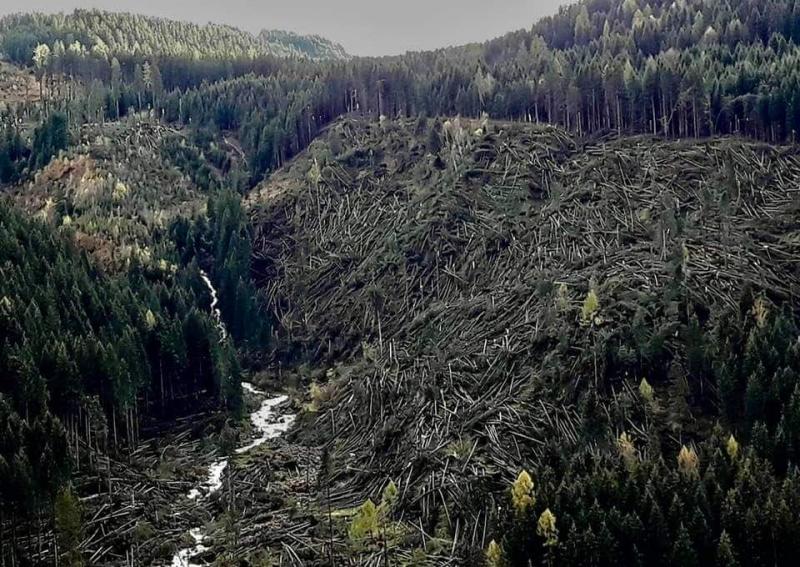“An apocalypse: forests swept away, streets damaged, trellis bended like twigs.” Thus the head of Italy’s Civil Protection Agency, Angelo Borrelli, describes the current situation in northern Italy.
Storms and winds up to 200 km/h brought the ‘apocalypse’ to the Dolomites and beyond last Monday, with 12 people killed (many by falling trees), 50,000 hectares of forests in Veneto, Trentino and Friuli Venezia Giulia destroyed in one night, roads damaged and closed due to mudslides, electricity cut off.
Around 14 million pine trees and red spruces have been razed, according to Coldiretti, the association of Italian agricultural companies, which said in a statement, “We’ll need at least a century to return to normality.”
Perhaps one of the most emblematic images is the one showing the surface of Comelico Dam near the Austrian border covered with trees that had fallen into the Piave river - trees that for centuries provided wood to the Venice Arsenal to be used as the foundations for the palaces of the city and as construction material for its galleys. They were brought to Venice on rafts along the Piave river, where they now float at the mercy of floods.
Other disturbing images show thousands of trees on the ground in the Fiemme valley, famous for the forests where violin-maker Antonio Stradivari sourced the wood for his instruments in the 17th century.
“Not even the Great War 100 years ago brought so much devastation to our trees as the wind did a few days ago,” said Roberto Rigoni Stern, the mayor of Asiago, a mountain town at the border between Veneto and Trentino.
“It’s a fatal blow to the ecosystem, because, with the razing of entire forests, biodiversity is gone, the local climate changes, the hydrogeological regime is affected, and landslides and avalanches may be facilitated, not to mention the enormous economic damage,” said Paola Favero, a commander with the State Forestry Corps.
The storms moved south over the weekend. 9 family members were killed in Sicily after a river flooded.




